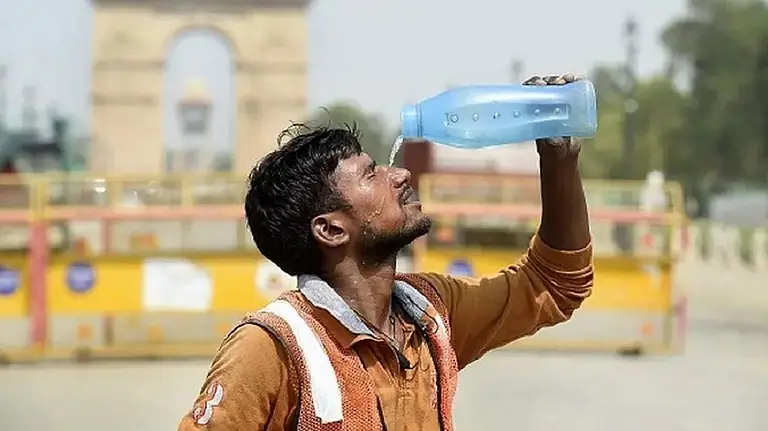New Delhi, June 11 – Delhi continued to reel under extreme heat on Tuesday as temperatures climbed to a season-high of 43.8°C, prompting the India Meteorological Department (IMD) to issue an orange alert for the national capital. The temperature was 3.6 degrees above the normal seasonal average, while humidity pushed the real feel close to 50°C in several parts of the city.
According to the IMD, heatwave conditions were recorded at all five of its stations in Delhi. Ayanagar registered the highest at 45.3°C, followed by Ridge at 44.9°C and Palam at 44.3°C. With relative humidity between 24% and 48%, the heat index has substantially surged to alarming levels.
The orange alert, issued for Tuesday and Wednesday, indicates the need for residents to take precautionary measures against health impacts. An official from the IMD noted that the current spell of heat is particularly intense due to “oppressive levels of humidity,” making outdoor exposure hazardous, especially during the afternoon.
Relief, however, may be on the horizon. The IMD has also forecast light rain and thunderstorms for parts of Delhi and the NCR from June 13 to 15, accompanied by gusty winds reaching up to 50 km/h. Until then, the heatwave is expected to continue with only a minimal fluctuation in maximum temperatures.
The heat is not only affecting Delhi. A part of northern India is facing similar conditions. Rajasthan’s (under red alert) Sri Ganganagar touched 47.3°C, whereas parts of Uttar Pradesh and Haryana have recorded temperatures above 44°C. The National Capital Region (NCR) is under orange & yellow warnings depending on severity.
Delhi’s air quality has worsened. The Air Quality Index (AQI) is now in the ‘poor’ category across most monitoring stations, ranging between 227 and 235, exacerbated by dust and increased ground-level ozone formation due to high temperatures.
The heat has also driven up electricity demand, putting additional strain on Delhi’s power grid. Officials noted a significant spike in cooling appliance usage, with demand nearing peak summer levels.
Health officials have asked residents to stay indoors, especially during peak hours (12 pm to 4 pm), keep hydrated, and wear light, breathable clothing. Special advisories have been issued for vulnerable groups, including senior citizens, children, and outdoor workers.
Experts warn that the combination of rising night-time temperatures, extreme daytime heat, and high humidity forms a dangerous environment for prolonged exposure, and it is more severe for those without access to air conditioning or cooling facilities.
With the monsoon still a few days away, Delhiites are advised to take all necessary precautions and avoid stepping out unless required.





